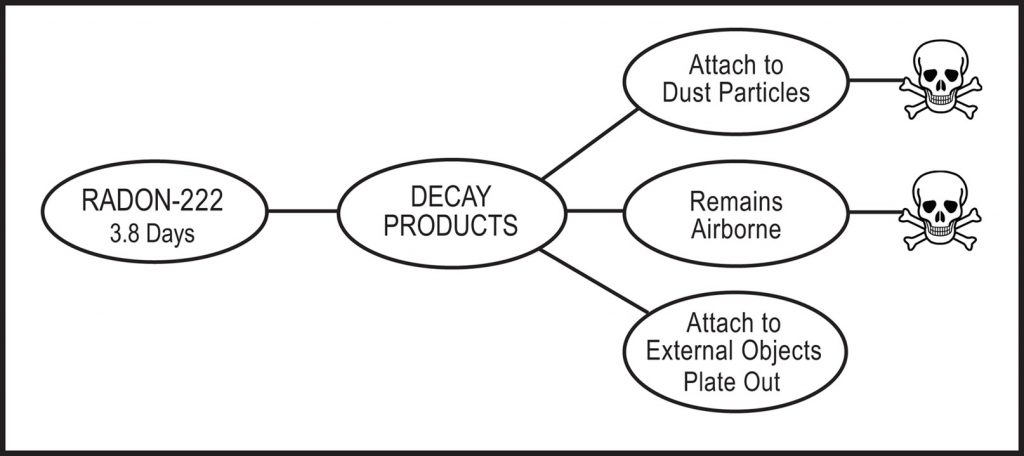Summary of the Progression of Indoor Radon
Once radon enters a house, it can decay in the air and continue decaying through its short-lived decay products, or it can be blown outside by ventilation air before it has a chance to decay. Illustrated below is the progression of radon in indoor air. (Figure 2-11)
Until decay products stick to an object they are referred to as the “unattached fraction”, or the fraction of the decay products that remain unattached and therefore breathable and measureable. These unattached decay products are part of the hazard. As solid, electromagnetically charged, particles they can be inhaled and become lodged in the lungs. When they stick to an object, RDPs can still present a health hazard if the object is small enough to float in the air (dust, smoke and pollen). If they plate out on to a wall or some other non-breathable object, however they are no longer a hazard.
For example, if air is being circulated by fans or blowers, a large portion of the decay products can be propelled onto walls, floors, furniture, etc. where they can “plate out”, hence lowering Working Level concentrations. Therefore, the radon concentration will be the same but the equilibrium ratio will be lower. The equilibrium ratio is also low immediately after a house has been extensively ventilated and then closed up. The soil gas entering the house contains radon but it is extremely low in decay products because they have plated out in the soil. Therefore, if a house is aired out and then closed up, it takes several hours for the decay products to return to a dynamic equilibrium with the radon.
If radon gas is removed from a house by ventilation before decay occurs, it no longer presents a health risk in the house. Outside, it mixes with fresh air, and quickly drops to very low concentrations.

Progression of Radon in Indoor Air
Source: A.P. Jacobson
